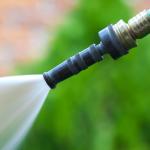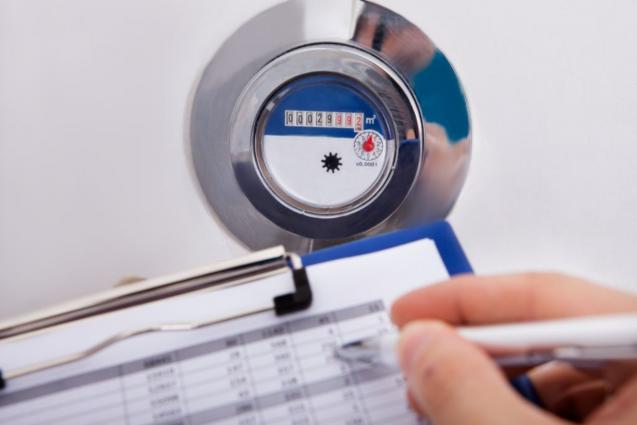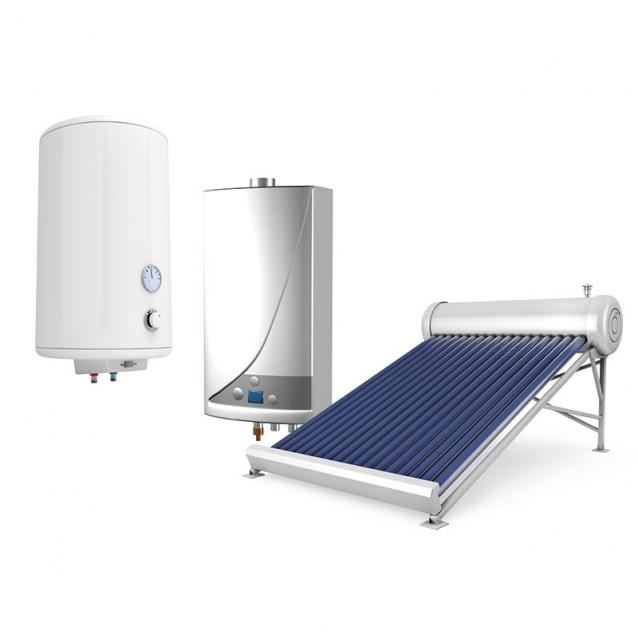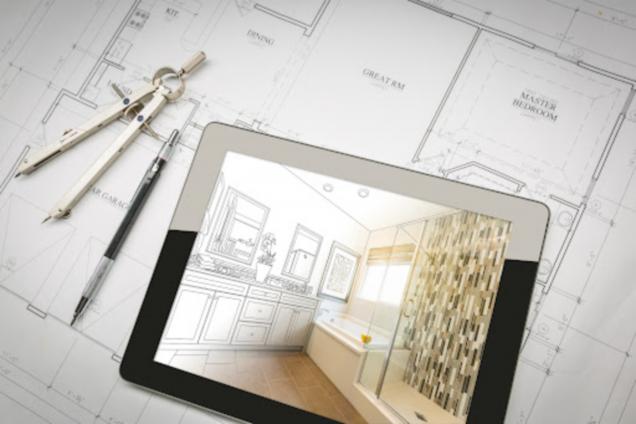
Managing Water Pressure In Your Home: Tips To Prevent Plumbing Noises And Damage
By Fluid Plumbing|August 14, 2023
Are you hearing strange noises from your pipes? Are you having difficulty controlling the water pressure in your home? Don't worry -- you're not alone.
Managing water pressure in your home is a common challenge, but it's one you can tackle easily with the right information.
In this article, we'll look at the basics of water pressure, common water pressure issues, and solutions and preventative steps you can take to keep your plumbing healthy and quiet.
Introduction: Water Pressure
Water pressure can be a great asset to a home, but if not managed properly it can also cause some serious plumbing issues. It's important to understand what water pressure is and how it affects your home's plumbing system.
Water pressure is the force of water pushing through your pipes, and it's measured in pounds per square inch (psi). If your water pressure is too high, it can lead to a water hammer, a banging noise caused by the sudden, forceful stop of water. High water pressure also causes pipes to wear out faster, leading to costly repairs.
On the other hand, if your water pressure is too low, it can make it difficult to get adequate water flow from your taps.
To prevent plumbing noises and damage, it's important to keep your water pressure in check. You can install a water pressure regulator on your main water line to reduce the pressure if it's too high or to increase the pressure if it's too low. You should also regularly check your home's water pressure to make sure it's within the recommended range.
If you notice any changes in your water pressure, contact a plumber for further advice. With the right management, you can keep your home's plumbing running smoothly and safely.
The Basics of Water Pressure: Definition and Function
You may have heard the term 'water pressure' before, but do you know what it really means?
Water pressure is the force of the water against the walls of the pipes in your water system. It affects the flow of water in both directions, so it's important to regulate the pressure in order to avoid plumbing issues and damage.
Understanding the basics of water pressure - its definition, function, and effects - is key to managing the water pressure in your home.
Pressure Definition
Understanding the pressure of the water in your home is essential to preventing plumbing noises and damage. Water pressure is the force at which water flows through plumbing pipes. The typical water pressure for residential homes is between 45-55 PSI (pounds per square inch).
If the water pressure is too low, the water flow won't be sufficient. If it's too high, it can cause damage to pipes and fixtures. You can measure the pressure of your home's water using a pressure gauge. This will give you an exact reading of how much pressure is being put on your pipes and fixtures.
Knowing the exact pressure can help you adjust it if necessary. You can also use pressure-reducing valves to lower the force if it's too great. This is a great way to reduce the risk of plumbing noises and damage.
Pressure Function
Adjusting the pressure of your pipes can help ensure a healthy plumbing system. Too much pressure can cause damage to your pipes, fixtures, and other parts of your plumbing system. You can prevent this damage by regulating the pressure of your water.
To do this, you need to understand what pressure is and how it works.
Pressure is the force that moves water through your pipes. The water pressure in your home depends on the size of your pipes, the consistency of your water flow, and the amount of water being used. The pressure should be strong enough to move the water but not so strong that it causes damage.
You can adjust the pressure of your pipes by adjusting the shut-off valve. This valve controls the amount of water that is released from the pipe. By adjusting the valve, you can increase or decrease the amount of pressure in the pipes.
Monitoring the pressure of your pipes is important for preventing damage. You can use a pressure gauge to help you check the pressure of your pipes. This will help you identify any issues and make adjustments to the pressure as needed.
By understanding how pressure works and adjusting the pressure in your pipes, you can help prevent plumbing noises and damage. Properly managing the water pressure in your home can be an effective way to protect your plumbing system.
Pressure Effects
If you don't regulate the pressure in your pipes, it can lead to serious issues in your plumbing system. When the pressure is too high, it can cause a banging noise throughout the house, as well as damage to the pipes and other parts of the plumbing system.
To avoid this, it's important to check the pressure in the pipes regularly to make sure it's not too high. You can use a pressure gauge or a pressure regulator to measure and adjust the pressure in the pipes. If you're not sure how to do this yourself, you can always call a plumber to help you out.
Keeping the pressure in check will help prevent damage and save you money in the long run.
Water System
Checking your water system regularly is key to keeping it running efficiently. Knowing the condition of your pipes, valves, and other components is essential when it comes to managing water pressure. Check for any signs of leaks and corrosion, and make sure the pressure relief valve is working properly.
You can also install water meters to monitor your water usage and keep tabs on your system's performance. Additionally, if you have a tank-style water heater, make sure to check the temperature pressure relief valve as well.
By keeping an eye on these components, you can avoid plumbing problems and costly repairs.
Regulating Pressure
Regularly monitoring the pressure in your water system is essential for keeping it running smoothly. Too much pressure can cause loud and disruptive noises in your pipes, leading to costly repairs. Too little pressure can result in inadequate water flow, and can even lead to bursting pipes.
To effectively manage water pressure, you'll need to install a pressure-regulating valve. This device helps keep the pressure within a healthy range. It should be installed at the main water line and connected to a pressure gauge. Check the gauge regularly to ensure the pressure is not too high or too low. If it is, adjust the pressure-regulating valve accordingly.
Additionally, inspect your pipes for any leaks or corrosion, as these can also affect the pressure. Taking these steps can help ensure your water system runs at optimal pressure.
Common Water Pressure Problems, Symptoms, and Solutions
Water pressure problems can cause a variety of symptoms in your home, so it's important to identify and address them quickly. Noises like banging, humming, and whistling in the pipes are common signs of high water pressure. Low pressure can also cause problems like weak showers and slow filling toilets.
Here are three ways to troubleshoot and resolve these issues:
Solutions and Preventative Maintenance for Water Pressure Issues
Now that you know the common water pressure problems, symptoms, and solutions, it's time to focus on solutions and preventative maintenance you can do to avoid water pressure problems in the future.
You can easily minimize the risk of plumbing noises and damage by following these four simple steps:
Taking these simple steps can help you avoid plumbing problems and keep your home safe.
You've now got the basics of understanding and managing water pressure in your home. By following these tips, you can avoid plumbing noise and damage and maintain good water pressure in your home.
Don't forget to regularly check the water pressure in your home to ensure it's running at optimal levels. With these tools in your toolbox, you'll be able to keep your water pressure in check and enjoy the benefits of a safe and healthy home.
Managing water pressure in your home is a common challenge, but it's one you can tackle easily with the right information.
In this article, we'll look at the basics of water pressure, common water pressure issues, and solutions and preventative steps you can take to keep your plumbing healthy and quiet.
Introduction: Water Pressure
Water pressure can be a great asset to a home, but if not managed properly it can also cause some serious plumbing issues. It's important to understand what water pressure is and how it affects your home's plumbing system.
Water pressure is the force of water pushing through your pipes, and it's measured in pounds per square inch (psi). If your water pressure is too high, it can lead to a water hammer, a banging noise caused by the sudden, forceful stop of water. High water pressure also causes pipes to wear out faster, leading to costly repairs.
On the other hand, if your water pressure is too low, it can make it difficult to get adequate water flow from your taps.
To prevent plumbing noises and damage, it's important to keep your water pressure in check. You can install a water pressure regulator on your main water line to reduce the pressure if it's too high or to increase the pressure if it's too low. You should also regularly check your home's water pressure to make sure it's within the recommended range.
If you notice any changes in your water pressure, contact a plumber for further advice. With the right management, you can keep your home's plumbing running smoothly and safely.
The Basics of Water Pressure: Definition and Function
You may have heard the term 'water pressure' before, but do you know what it really means?
Water pressure is the force of the water against the walls of the pipes in your water system. It affects the flow of water in both directions, so it's important to regulate the pressure in order to avoid plumbing issues and damage.
Understanding the basics of water pressure - its definition, function, and effects - is key to managing the water pressure in your home.
Pressure Definition
Understanding the pressure of the water in your home is essential to preventing plumbing noises and damage. Water pressure is the force at which water flows through plumbing pipes. The typical water pressure for residential homes is between 45-55 PSI (pounds per square inch).
If the water pressure is too low, the water flow won't be sufficient. If it's too high, it can cause damage to pipes and fixtures. You can measure the pressure of your home's water using a pressure gauge. This will give you an exact reading of how much pressure is being put on your pipes and fixtures.
Knowing the exact pressure can help you adjust it if necessary. You can also use pressure-reducing valves to lower the force if it's too great. This is a great way to reduce the risk of plumbing noises and damage.
Pressure Function
Adjusting the pressure of your pipes can help ensure a healthy plumbing system. Too much pressure can cause damage to your pipes, fixtures, and other parts of your plumbing system. You can prevent this damage by regulating the pressure of your water.
To do this, you need to understand what pressure is and how it works.
Pressure is the force that moves water through your pipes. The water pressure in your home depends on the size of your pipes, the consistency of your water flow, and the amount of water being used. The pressure should be strong enough to move the water but not so strong that it causes damage.
You can adjust the pressure of your pipes by adjusting the shut-off valve. This valve controls the amount of water that is released from the pipe. By adjusting the valve, you can increase or decrease the amount of pressure in the pipes.
Monitoring the pressure of your pipes is important for preventing damage. You can use a pressure gauge to help you check the pressure of your pipes. This will help you identify any issues and make adjustments to the pressure as needed.
By understanding how pressure works and adjusting the pressure in your pipes, you can help prevent plumbing noises and damage. Properly managing the water pressure in your home can be an effective way to protect your plumbing system.
Pressure Effects
If you don't regulate the pressure in your pipes, it can lead to serious issues in your plumbing system. When the pressure is too high, it can cause a banging noise throughout the house, as well as damage to the pipes and other parts of the plumbing system.
To avoid this, it's important to check the pressure in the pipes regularly to make sure it's not too high. You can use a pressure gauge or a pressure regulator to measure and adjust the pressure in the pipes. If you're not sure how to do this yourself, you can always call a plumber to help you out.
Keeping the pressure in check will help prevent damage and save you money in the long run.
Water System
Checking your water system regularly is key to keeping it running efficiently. Knowing the condition of your pipes, valves, and other components is essential when it comes to managing water pressure. Check for any signs of leaks and corrosion, and make sure the pressure relief valve is working properly.
You can also install water meters to monitor your water usage and keep tabs on your system's performance. Additionally, if you have a tank-style water heater, make sure to check the temperature pressure relief valve as well.
By keeping an eye on these components, you can avoid plumbing problems and costly repairs.
Regulating Pressure
Regularly monitoring the pressure in your water system is essential for keeping it running smoothly. Too much pressure can cause loud and disruptive noises in your pipes, leading to costly repairs. Too little pressure can result in inadequate water flow, and can even lead to bursting pipes.
To effectively manage water pressure, you'll need to install a pressure-regulating valve. This device helps keep the pressure within a healthy range. It should be installed at the main water line and connected to a pressure gauge. Check the gauge regularly to ensure the pressure is not too high or too low. If it is, adjust the pressure-regulating valve accordingly.
Additionally, inspect your pipes for any leaks or corrosion, as these can also affect the pressure. Taking these steps can help ensure your water system runs at optimal pressure.
Common Water Pressure Problems, Symptoms, and Solutions
Water pressure problems can cause a variety of symptoms in your home, so it's important to identify and address them quickly. Noises like banging, humming, and whistling in the pipes are common signs of high water pressure. Low pressure can also cause problems like weak showers and slow filling toilets.
Here are three ways to troubleshoot and resolve these issues:
- Invest in a pressure regulator. This device helps reduce the water pressure in your system and can protect your pipes from damage.
- Check for blockages. Clogs in your pipes can reduce water flow and increase pressure. Check for any blockages and clear them away to restore normal pressure.
- Make sure the shut-off valves are open. If the valves are closed, they can cause water pressure to build up in the pipes. Open the valves to let the water flow freely.
Solutions and Preventative Maintenance for Water Pressure Issues
Now that you know the common water pressure problems, symptoms, and solutions, it's time to focus on solutions and preventative maintenance you can do to avoid water pressure problems in the future.
You can easily minimize the risk of plumbing noises and damage by following these four simple steps:
- Install a pressure reducing valve.
- Replace worn out parts.
- Check for plumbing leaks.
- Schedule regular maintenance.
Taking these simple steps can help you avoid plumbing problems and keep your home safe.
You've now got the basics of understanding and managing water pressure in your home. By following these tips, you can avoid plumbing noise and damage and maintain good water pressure in your home.
Don't forget to regularly check the water pressure in your home to ensure it's running at optimal levels. With these tools in your toolbox, you'll be able to keep your water pressure in check and enjoy the benefits of a safe and healthy home.



